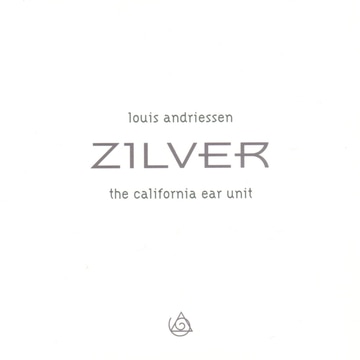|
Zilver
The California EAR Unit Zilver; Disco; Overture to Orpheus; Worker’s Union No composer can provoke, jolt and threaten the system better than Mr. Andriessen, who has been practicing those skills for his entire career ... --The New York Times The basic idea of Zilver is to write a chorale variation like Bach did for the organ: a long melody in slow musical motion, combined with fast playing of the same melody. The slow playing of the melody, which is a pop song that nobody will recognize, is done by the winds and the strings; they also play in slow four-part harmony, like a chorale. The rest of the instruments -- the two percussion players, playing on keyboard instruments (vibraphone and marimba), and the piano -- play staccato chords, and these staccato chords become faster and faster all the time. Basically the ensemble is divided into these groups, and the two groups play canons that are combined together. Zilver also seems to be a part of a series of chamber music pieces named for certain kinds of matter: Hout which means 'wood', could be the first, and Zilver could be the second one. ("Zilver" means 'silver' in Dutch.) The title probably also has to do with the fact that the two silver instruments -- flute and vibraphone -- start and end the piece. Zilver was written for the California EAR Unit. Disco was written in 1982 on a commission from the Dutch government. The outer sections of the piece occupy the sound environment of the 'hyper-instrument' created when both instruments play in unison, while the static inner section explores the ringing overtones of sympathetic strings in the piano. Worker's Union (1975) is a 'symphonic movement for any loud sounding group of instruments.' It is from the same period as Andriessen's Hoketus and shares many similarities with that work. Most notably, it is built of short rhythmic cells which are repeated varying numbers of times. However, in this work there are no specific pitches until the very end of the piece. Instead, the notated rhythms are played precisely, with the pitch content consisting of contours depicted relative to a horizontal line representing the middle register of a player's instrument. The instructions are 'to make the piece sound dissonant, chromatic, and often aggressive.' And only in the case that every player plays with such an intention that his part is an essential one, the work will succeed; just as in the political work.' --Louis Andriessen and the California EAR Unit Available here: iTunes HDtracks Comments are closed.
|
New Albion Records, Inc.Archives
October 2010
|

